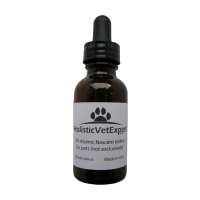
|
|


|
|
|||
Diseases are a fact of life. People, plants and pets are all susceptible to an infinite number of germs, pathogens, infections and viruses that attack the immune system and if left untreated can cause a severe and even life-threatening condition. While people tend to recognize symptoms of an illness quickly pets don’t have the ability to tell their owners that they are not feeling well. Pet owners need to be proactive when treating their pets and know when their furry friend is experiencing difficulty. | |||
|
We have Nascent Iodine!
| Case Histories |
MAX: A CASE OF IMMITICIDE POISONING
Results of routine heart worm treatment
Dana Matthews DC
Greg Hollandsworth DC
"Max the boxer has had quite a life. He was born in Texas on July 25, 2006 and for the first 2 ½ years of his life, he lived with a family who had too much going on to take proper care of him. They had too many kids and other dogs and so Max, being an energetic boxer puppy and too much to handle, got chained to a tree in the backyard. Finally the family decided to give Max up for adoption so that another family could offer him the life he deserved. Unfortunately, by the time they had decided to do that, Max had already been bitten by a mosquito that carried heartworms and it subsequently infected him...."


Home About Dr Preston Why Holistic? Resources Content Privacy Statement Site Map Contact Us
Copyright ©2009, Holistic Vet Expert, All Right Reserved





